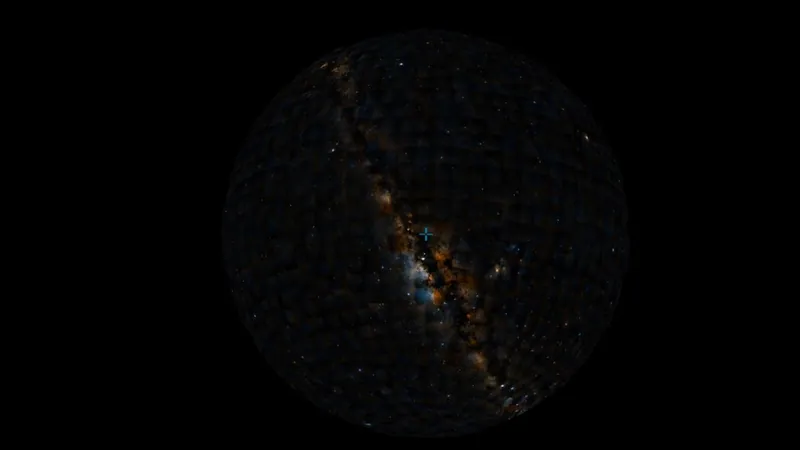
Unveiling the Largest Map of the Milky Way: A Cosmic Breakthrough!
2024-10-01
Introduction
Astronomers at the European Southern Observatory (ESO) in Chile have achieved a monumental feat by completing a comprehensive map of the Milky Way—a project that spanned over a decade. Initiated in 2010 and finalized in 2023, this ambitious endeavor has redefined our understanding of our galaxy with unprecedented detail and clarity.
Project Overview
Over the course of 13 years, the research team captured more than 200,000 photographs, dedicating 420 nights to meticulously documenting as much of the Milky Way as possible. The resulting map is a staggering 500 terabytes, showcasing an astonishing 1.5 billion celestial objects. From ancient stellar clusters to the elusive newborn stars obscured by cosmic dust, this detailed map reveals the immense diversity of our galactic neighborhood.
Significance of the Findings
Dante Minniti, an astrophysicist at Universidad Andrés Bello in Chile and the project's leader, stated, “We made so many discoveries; we have changed the view of our Galaxy forever.” Indeed, the new map is not just a collection of images; it represents a gateway to understanding the complex structure and history of the Milky Way.
Technological Innovation
To accomplish this level of detail, the ESO employed the powerful VISTA telescope, harnessing its VIRCAM—a high-resolution infrared camera. This technology enables astronomers to detect celestial bodies hidden behind clouds of dust and gas, including faint objects like free-floating planets and brown dwarfs, which are stars that have not ignited into full-fledged fusion.
Previous Demonstrations
Interestingly, the ESO shared a video on YouTube eight years ago, demonstrating the superiority of VIRCAM's infrared capabilities over traditional visible-light imaging. The video highlighted how VIRCAM reveals a multitude of stars and fellow celestial objects that are otherwise invisible to the naked eye.
Access to the Map
So, how extensive is this new map of the Milky Way? While the full breadth and detail of the map are too vast to display in a single image, the ESO has made the entire map accessible on their website. Users can zoom in on almost any section to explore clusters of stars teeming with life and mystery. However, it’s essential to note that, despite its extensive reach, the map does not encompass the entirety of our galaxy.
Conclusion
This landmark achievement not only enhances our understanding of the Milky Way but also sets the stage for future astronomical inquiries, questioning the very fabric of our universe. With every new discovery, we move closer to unraveling the mysteries of our galactic home!




 Brasil (PT)
Brasil (PT)
 Canada (EN)
Canada (EN)
 Chile (ES)
Chile (ES)
 España (ES)
España (ES)
 France (FR)
France (FR)
 Hong Kong (EN)
Hong Kong (EN)
 Italia (IT)
Italia (IT)
 日本 (JA)
日本 (JA)
 Magyarország (HU)
Magyarország (HU)
 Norge (NO)
Norge (NO)
 Polska (PL)
Polska (PL)
 Schweiz (DE)
Schweiz (DE)
 Singapore (EN)
Singapore (EN)
 Sverige (SV)
Sverige (SV)
 Suomi (FI)
Suomi (FI)
 Türkiye (TR)
Türkiye (TR)